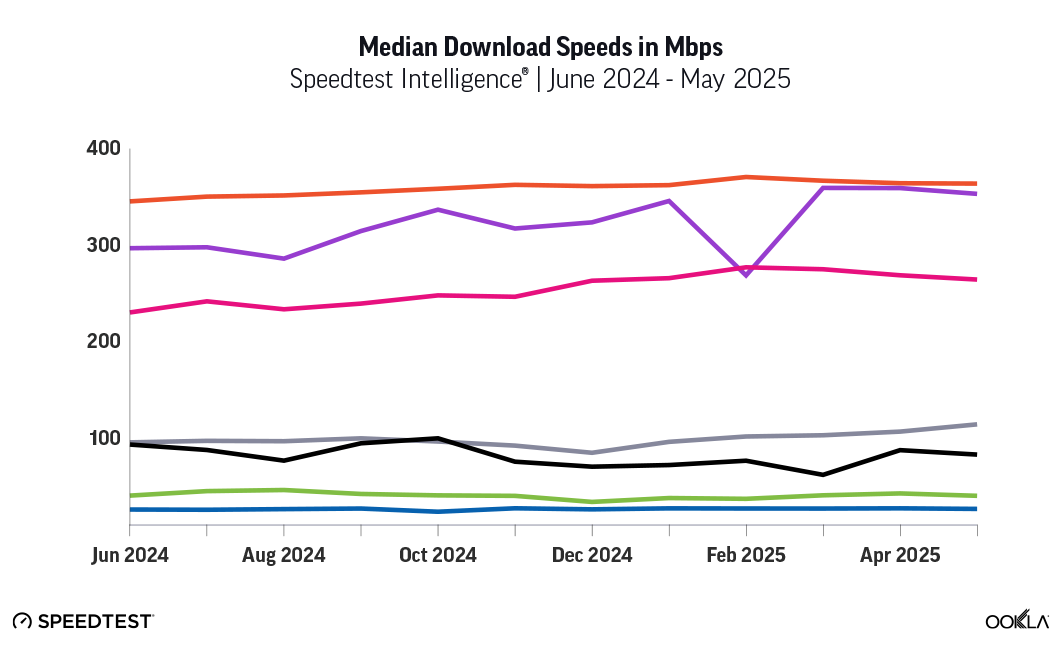States across the U.S. are in a race against the clock. Following new guidance from the National Telecommunications and Information Administration (NTIA), states have until September 3, 2025 to revise and resubmit their proposals for the $42.5 billion Broadband Equity, Access, and Deployment (BEAD) program, which is designed to fund high-speed internet buildouts in unserved and underserved areas across the country. It’s a tight timeline, especially given the difficult task ahead: evaluating which internet service providers (ISPs) can truly deliver reliable broadband, and which ones may be overpromising.
While the latest guidance for BEAD is new, the challenge of verifying provider claims isn’t. Federal programs have long struggled with network performance data that looks solid on paper but falls short in practice. Now that states are making the calls, broadband offices need dependable ways to tell which networks can truly deliver.
To qualify for BEAD funding, providers must demonstrate the ability to deliver speeds of at least 100 Mbps download and 20 Mbps upload and latencies below 100 ms. A wave of new ISPs is eager to meet that mark and be included in state proposals. But some rely on technologies that have sometimes struggled to meet speed requirements with current network and infrastructure deployments.
Whether new applicants can meet the required performance metrics consistently when real users are online, particularly during peak hours, is a question many officials will be asking as they are weighing the options before them. For broadband offices already juggling community needs, infrastructure gaps, and political pressure, validating these claims isn’t just a technical challenge — it’s a logistical one.
The Challenge: Sorting Real-World Performance From Wishful Claims
One of the most urgent tasks states now face is verifying whether ISPs can truly meet the FCC’s broadband speed standard of 100 Mbps download and 20 Mbps upload. On paper, many providers may qualify — but real-world performance often tells a different story.
That’s where Ookla can help. Our data offers a real-world view into actual user experiences — not marketing promises or theoretical models. By mapping where service consistently meets the FCC’s broadband benchmark, states can make faster, more informed decisions about which providers and which technologies are ready to meet BEAD’s requirements. Whether evaluating rural deployments or contested service areas, objective performance data helps broadband offices focus their proposals on providers that can truly deliver.
New guidance from the NTIA now requires states to treat all broadband technologies equally — including fixed wireless and LEO satellite — and prioritize the lowest-cost proposals. That shift opens the door to more providers and deployment types, but also makes it harder to assess which ones can actually meet BEAD requirements. Ookla’s data gives states the ability to evaluate these newer technologies with the same level of rigor as traditional fiber and cable options.

Anonymized chart above of sample operators from a single state shows median download speeds in Mbps from companies using virtually all widely used internet technologies including Cable, DSL, Fiber, FWA, Satellite, and WISP.
Conclusion
Better data supports better decisions — and helps ensure that BEAD funding goes to networks that can support the communities they’re meant to serve, not just on paper but in the real world. With proposals due by September 3, states need every advantage they can get.
The funding choices broadband offices make in the coming weeks will shape internet access for years to come, especially in areas that have historically been overlooked or underserved.
Discover how Ookla’s broadband data can enhance your BEAD program proposals. For inquiries, please reach out to us at us-government@ookla.com.
Ookla retains ownership of this article including all of the intellectual property rights, data, content graphs and analysis. This article may not be quoted, reproduced, distributed or published for any commercial purpose without prior consent. Members of the press and others using the findings in this article for non-commercial purposes are welcome to publicly share and link to report information with attribution to Ookla.

